It’s not every day that a silver jigsaw puzzle ends up on your desk – but that’s the challenge that we’ve been facing for the past few months. This is no ordinary jigsaw, though – we’re piecing back together a hoard of hacked-up Roman silver. This new discovery is changing our views on Rome’s relation with Scotland 1700 years ago. It’s a find of European importance – but why? What’s so important about a pile of silver shrapnel?
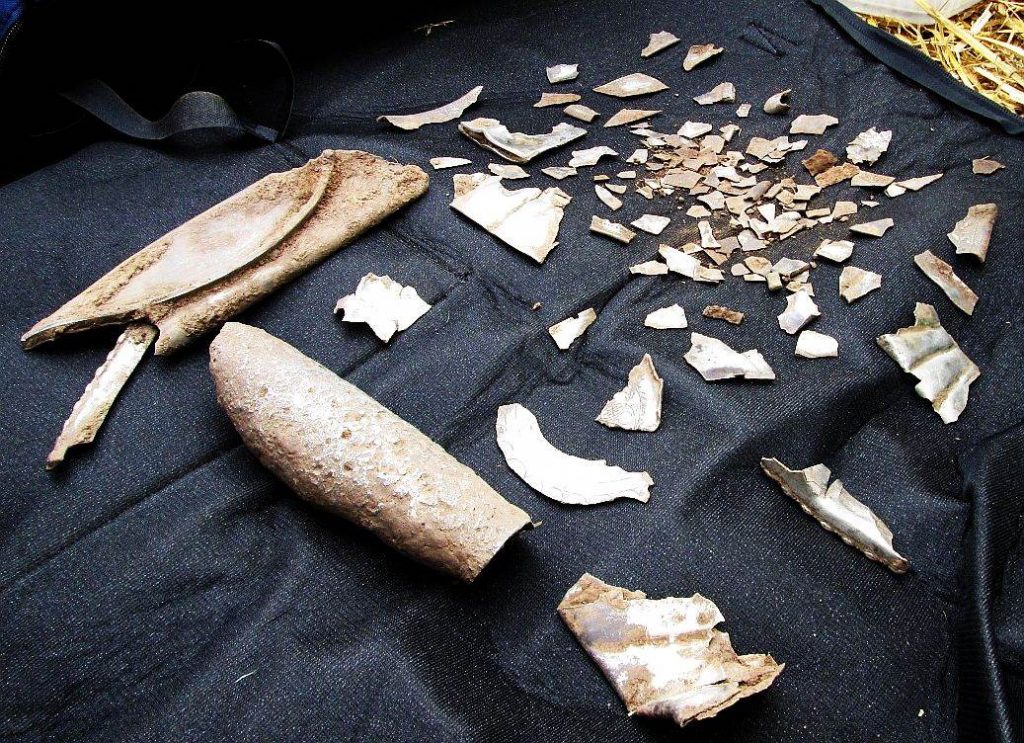
The hoard was found during a Detecting Scotland metal-detecting rally at Dairsie in Fife in 2015. Schoolboy David Hall made the first finds, with over 200 fragments recovered that day. The discovery was reported to the Treasure Trove Unit, who got me involved as they know my weakness for shiny Roman things, and we went out to dig at the site, finding another 200 fragments and a story to go with them.
But more of that later. What about the silver?
Well, the find came at the perfect time – we were just starting the latest phase of the Glenmorangie Research Project, looking at Scotland’s Early Silver, and this was wonderful new evidence to work with. 408 pieces of silver came from the field, but this is not how they went into the ground 1700 years ago. Originally, parts of four Roman silver vessels were buried as a hoard. There was a dish, a bowl, a beautifully decorated beaker, and a rolled-up silver cylinder. The beaker was buried intact, but the rest had been cut up into pieces and folded or rolled into packages. We call this hacksilver, when valuable objects have been cut into chunks of silver; the weight of the raw material was more important than the beauty of the object. As well as being hacked in the Roman period, these objects have suffered further damage – generations of ploughing have shattered them into hundreds of pieces. That’s what makes our jigsaw so difficult – some of the fragments are tiny.
The Devil’s jigsaw
We can reconstruct what the vessels once looked like from examples found elsewhere. Conservation is still underway – the photos below show the fragments as they came out of the ground – but at later blog post will show you what they look like now, as our conservators clean off the corrosion and Fife mud, and painstakingly piece them back together.
It’s hard to imagine the original quality of the vessels now. This dish was cut into quarters, with two of these folded into bundles.
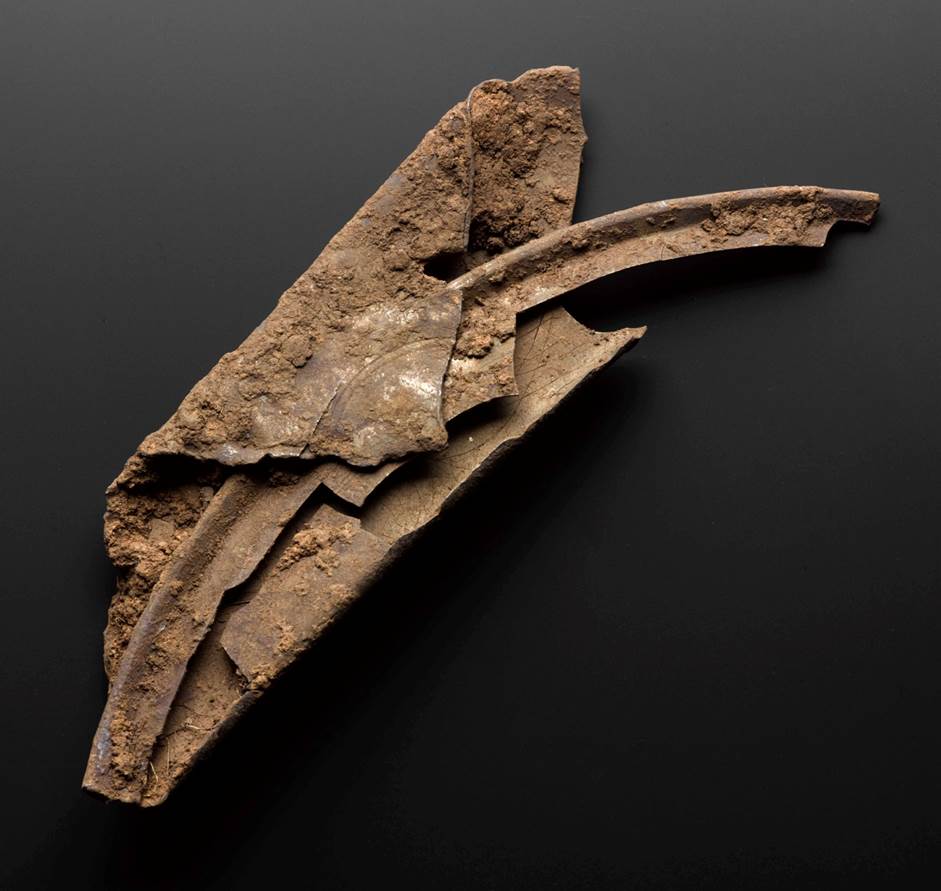
It was once a lovely item, with a decorative beaded rim and a beautiful engraved pattern in the centre set off with a dark inlay called niello to give it a colour contrast. Examples from elsewhere show us this was made in the later third century AD.
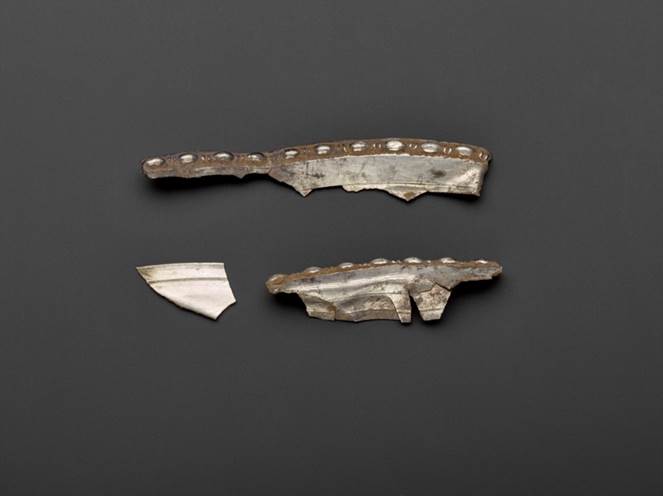
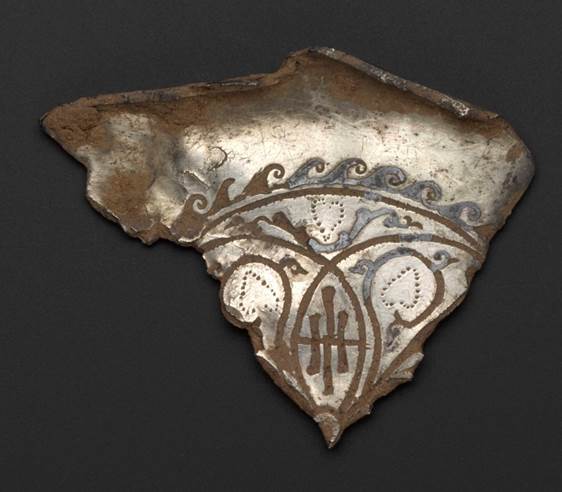
central design.
The bowl had elegant flutes hammered into it. It would be used to wash your hands at a posh dinner party, but it’s been a real puzzle to reconstruct. It was cut into thirds, but only two were tightly folded up and buried, then later smashed by the plough. This three-dimensional jigsaw puzzle has left us scratching our heads and folding up bits of paper to try to work out what happened!
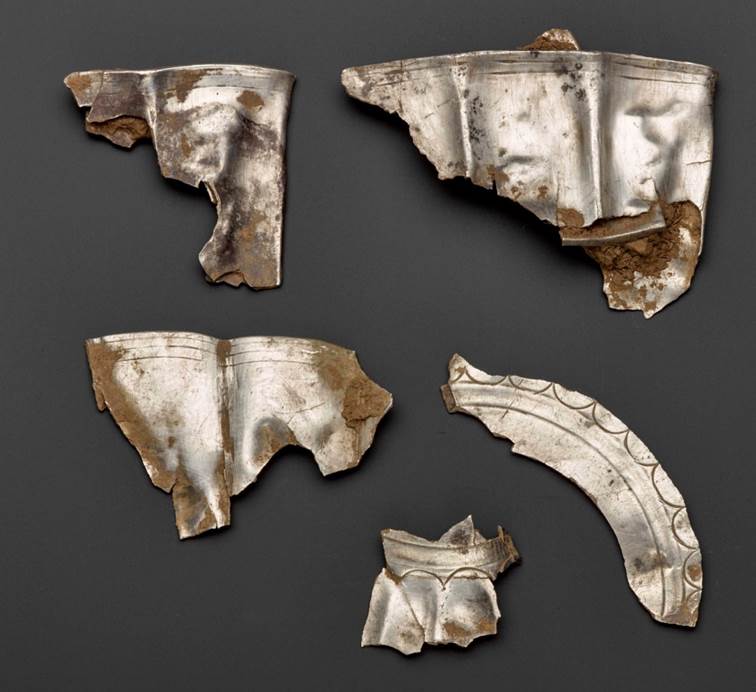
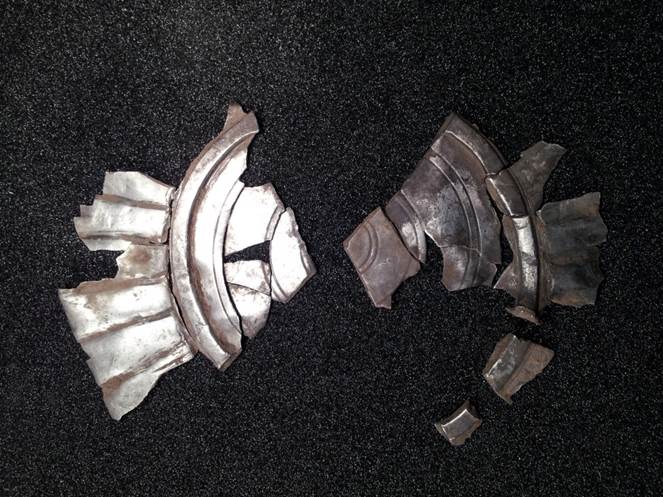
The cylinder is a puzzling piece – its irregular surface suggests it may have been a flawed casting. But the real gem of the show is the beaker. This paper-thin silver has been smashed into the tiniest fragments, but we think it was intact when it was buried, as almost all the rim survives and there’s no trace of cutmarks. It’s been beautifully decorated with patterns hammered in from the outside, so you’d see them best as you drank from it. The photo shows a few tantalising fragments – come back later to see how we’re getting on with this reconstruction!
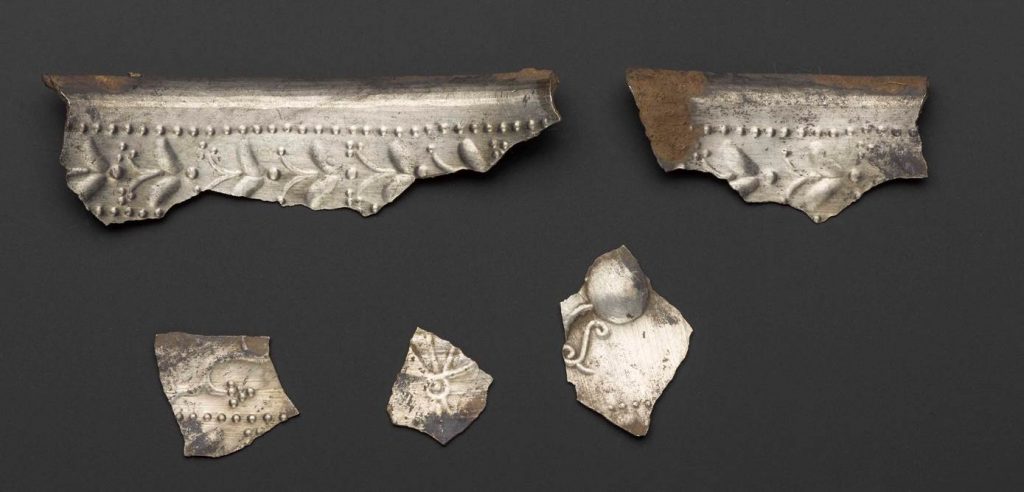
What does it mean?
So why did this hacked-up silver end up in Fife? Scholars used to think such hacked-up silver was barbarian loot – beautiful objects cut up by our ancestors because they could not appreciate their artistic value. But we’ve been doing a lot of research into this recently, and the story is more complex. Hacksilver is found in the Roman world as well as beyond its borders. A lot of it is cut up quite carefully, into halves or quarters, not just randomly hacked – and a lot of it matches Roman weight standards. These give the clues we need – this silver was being used within the Roman economy as bullion. Its value was as a raw material. At times of economic hardship, the family silver could be cut up and traded off.
But why was it in Fife? When the hoard was buried in the later third century AD, Scotland was outside the Roman world. But the Romans still maintained an interest in the area. A century earlier they’d been sending silver coins into Scotland as a form of bribery. This was sensible frontier diplomacy – using silver sweeteners to buy peace beyond the frontier. But this policy ended in the early third century. We thought the Roman world had lost interest in Scotland as more pressing problems elsewhere took their eye. Only in the dying days of the empire did rich pay-offs reappear, with finds like the Traprain Treasure.
But this Fife find rewrites the story. It shows there were continuing attempts to keep the northern tribes sweet – especially on the east coast. Around this time the troublesome groups known as the Picts were emerging in eastern Scotland north of the Forth, so silver like the Dairsie find might have been targeted at them.
This isn’t just a first for Scotland – it’s the first time we see this policy anywhere in Europe. Hacksilver finds north of the frontier are known from the fourth and fifth centuries – but this discovery has pushed the policy back a hundred years. It’s rewriting our view of Roman frontier politics. Not bad for a silver jigsaw.
Why was it there?
The finds are great – but we wanted to know more. Had the detectorists found all the fragments – and why was the find there at all? So we went digging. First, we worked with the detectorists to scan the area again, finding bits which they’d missed in their excitement. Then we stripped the soil away in spits, finding more and more silver.
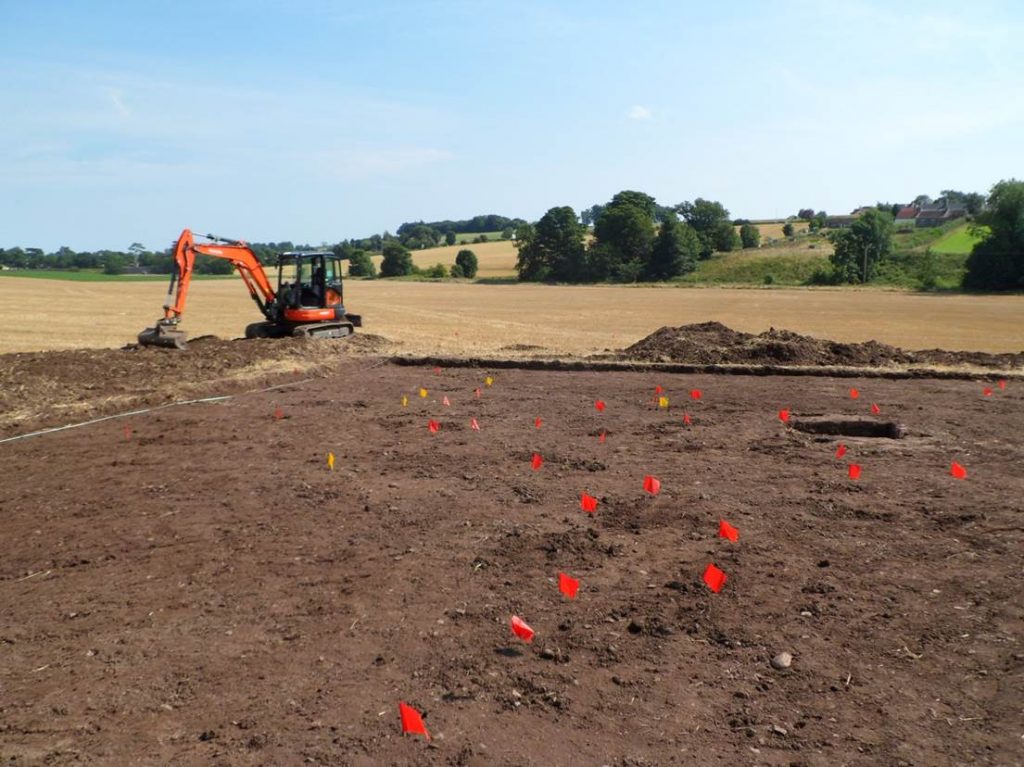
At this point, the skills of the field archaeologists took over – cleaning, drawing, digging and puzzling. Why was the hoard buried here? Were there any clues?
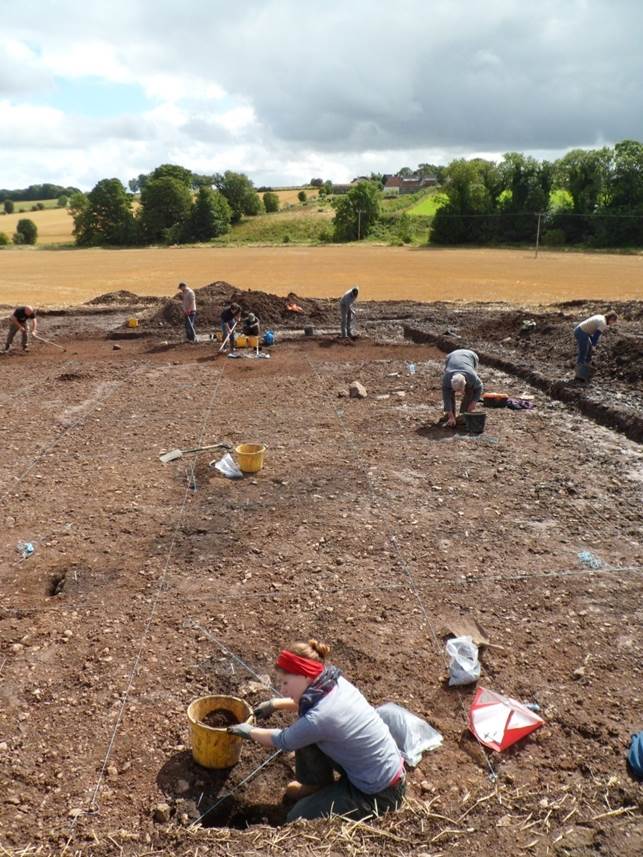
Yes, there were. We found tell-tale black marks in the subsoil – traces of pits. Two of them had big broken stones in them and some prehistoric pottery, suggesting there was an ancient monument here – a pair of standing stones, already 2000 years old when the hoard was buried. To the other side was a small peat bog. Wet places were often seen as special or sacred in prehistory, and we think it’s no accident the silver was buried here. This was a memorable place – there would have been tales and myths about the “auld stanes” and the strange wet place. Was the silver buried as a sacrifice, or an offering of valued material?
So, our silver jigsaw is telling us tales. It’s a find of European significance, changing the way we understand how Rome dealt with its northern neighbours. The digging has given us clues about why it was buried here. But the jigsaw continues – as I type, our conservators are busily gluing bits of silver together. Come and see the results in our free exhibition on Scotland’s Early Silver, opening at the National Museum of Scotland in Edinburgh on 13 October 2017 – or come back here for another blog post in a few weeks, when we get the silver stuck together.
Scotland’s Early Silver exhibition is at the National Museum of Scotland until 25 February 2018 and follows three years of research supported by The Glenmorangie Company.

